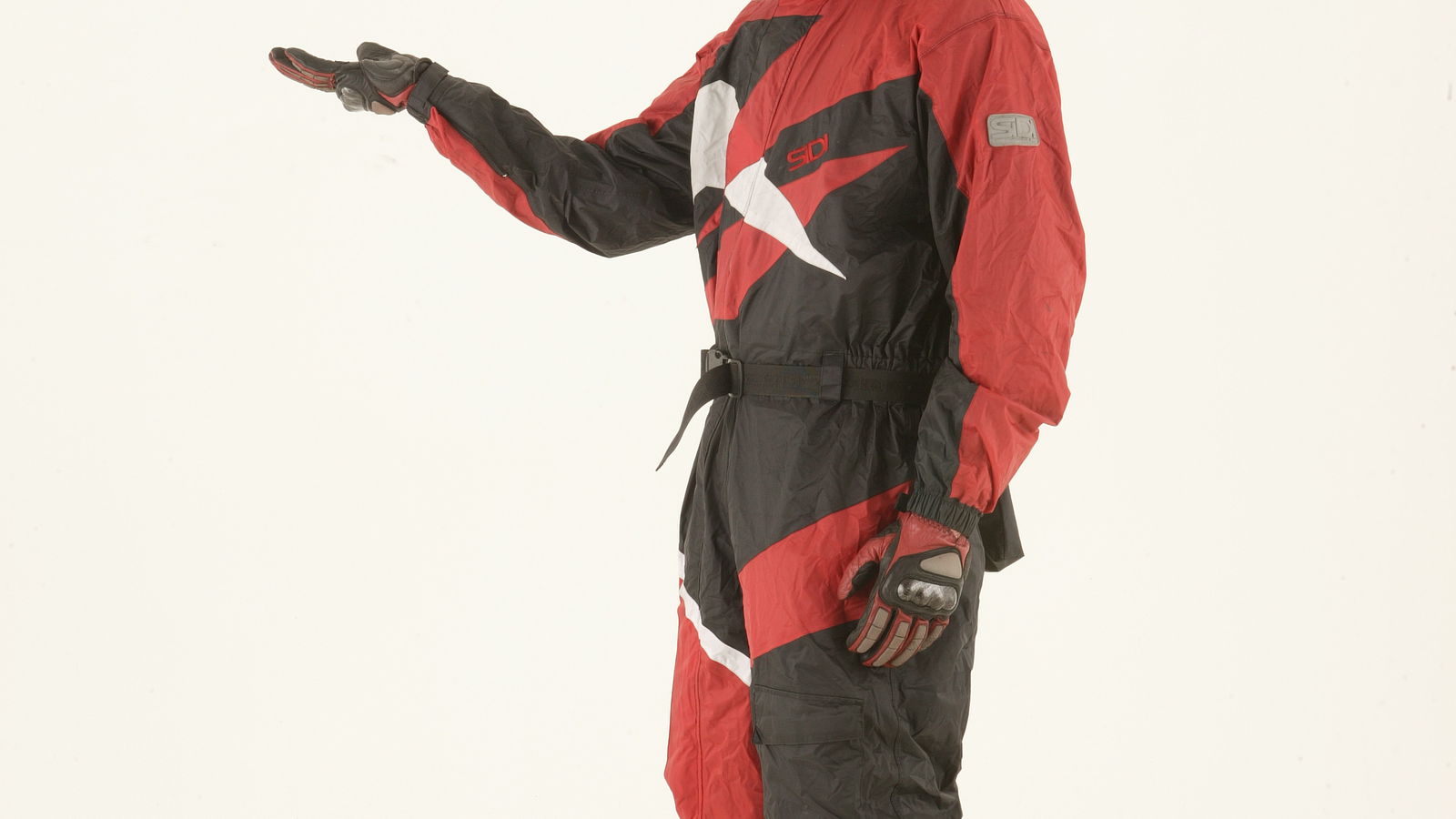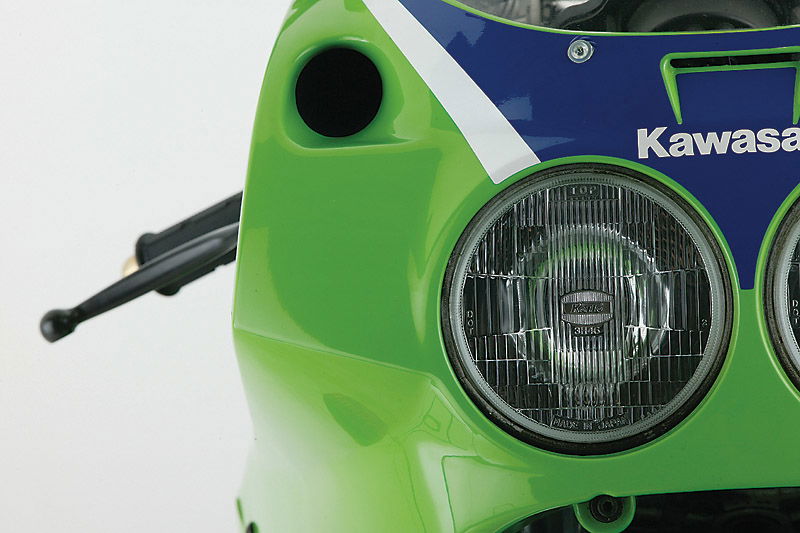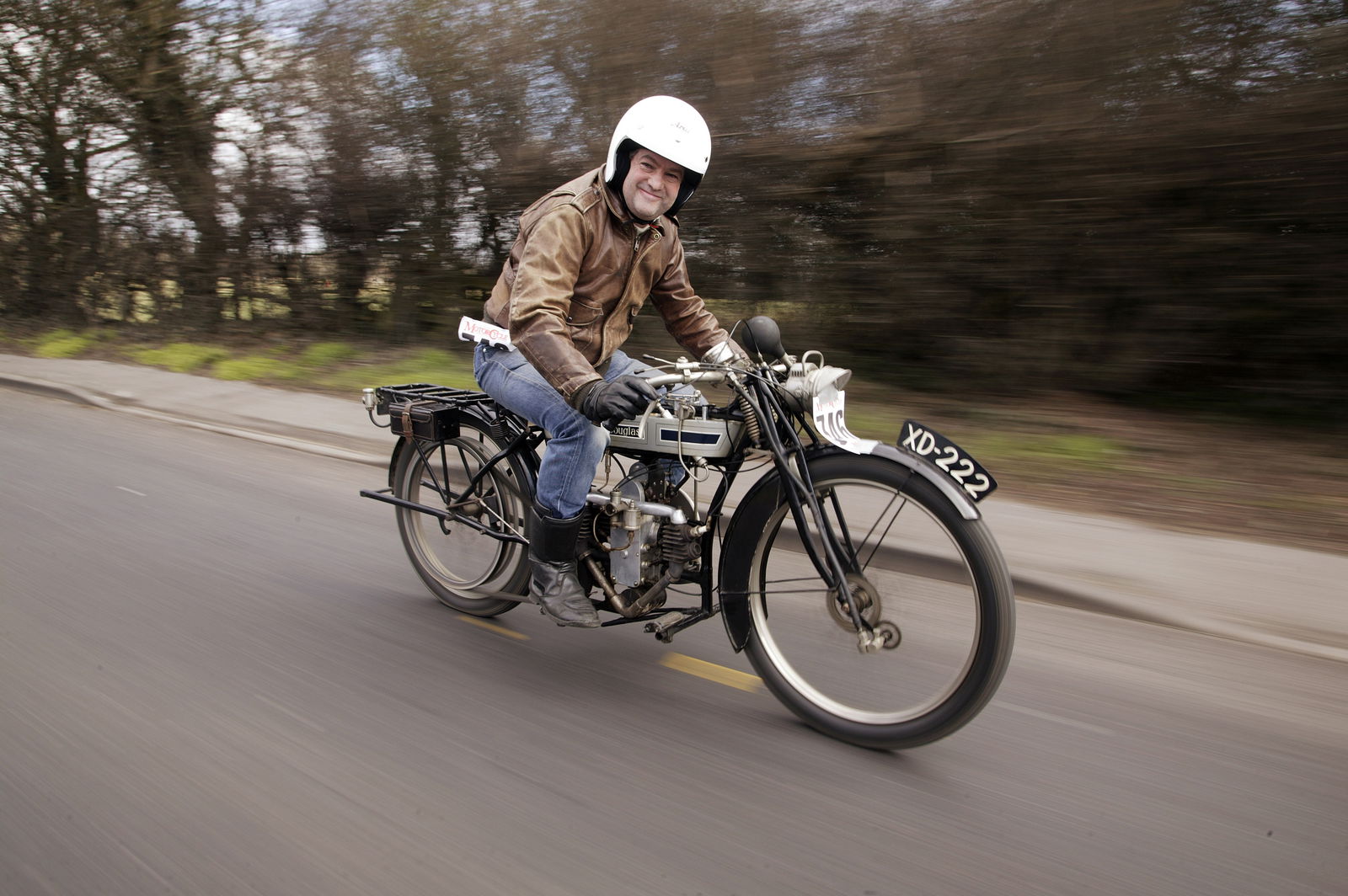Wet weather motorcycle clothing guide
A simple guide to buying the right kit and keeping dry this winter

WHAT TO WEAR
Waterproof textiles or leathers and an unlined oversuit? Both have their advantages, and many people have more than one option these days. The main problem with wearing unlined lightweight plastic waterproofs is that they don't breathe, and in certain conditions you can get as wet from the inside out as you would from the outside in were you not wearing them. If it's chilly and wet, they're fine, but ride in wet, mild weather or spend a lot of time at low speed or around town and you can end up a bit sweaty.
That aside, unlined waterproofs are generally cheap and easy to carry around when not being worn, and a good quality unlined one-piece suit with properly fastened cuffs and collar is about as waterproof as you can get on a bike. You also get to entertain passers-by as you struggle into it at the side of the road when the heavens open, hopping from one foot to the other as you try to get the suit on quickly without taking your boots off.
Textile clothing with a waterproof, breathable lining such as Gore-Tex has many advantages over the leathers and oversuit option. For a start the jackets and trousers are far more versatile, with removable linings, body armour, pockets and multi-adjustments. Providing the breathable membrane works as it should, you're less likely to get too sweaty underneath - although there are limits to how much body heat a textile jacket can deal with, so don't expect miracles on a hot day.
��
Plugging the gaps
PLUGGING THE GAPS
The weak points on any waterproof clothing are the main zip, cuffs and collar. It doesn't matter how waterproof the material is, if water can get in past a zip or down a collar and soak your front, then you're going to get wet. While poor design may be the root cause in some cases, in others it's worth checking you're doing the thing up properly. If there's a storm flap over the main jacket zip, make sure it's folded flat along its full length or water might get past.
Collars are another problem area, and need enough adjustment in them to do up tightly enough to prevent water pouring through but without restricting head movement or blood supply to the brain. Neck tubes can work as a 'gasket' to seal the gap, but bear in mind that some materials do more harm than good, wicking water inside the jacket instead of protecting against it.
Do you wear your gloves over your jacket sleeve cuffs or under? While most people opt for the 'gloves over' option, 'gloves under' can be a much better way to go. The problem with 'gloves over' is that water running down your sleeve can get into the glove. No matter how waterproof their lining is, if you pour water into them from above your hands will get wet. It's a particular problem for sportsbike riders whose arms tend to be angled more steeply down.
Some combinations of glove and cuff fastening simply won't allow the 'gloves under' option, or let in horrible draughts if you try it, but when it works it works well. Give it a go.
Visors can be a nightmare in the wet. Anti-mist products such as Pinlock or Fog City work a treat, but the thing you need to avoid with those is getting water on the inside of the visor. A properly fitted visor with a good seal all the way round is essential. Pinlocks in particular work fantastically well, but are a right pain if they get wet - if it's raining, you simply can't open your visor at all. Fine if you're moving, but it can be annoying in town or when stationary, and all the more so if you wear glasses.
The trick to staying dry is wearing good gear and plugging all the gaps before you start moving, then once you do, don't stop. Rain always finds a way in when you're stationary or travelling at low speed. The other time you need to be careful is when you get off the bike, especially when paying for fuel. Removing gloves and, if necessary, your helmet, is a pain in the arse if you've previously rendered everything watertight with careful dressing at home in the dry. Don't throw everything back on in a rush at the fuel pump, instead take your time to make sure it's all back on properly. And if your hands get wet putting your wallet away and helmet back on, dry them before putting them in your gloves.
��

